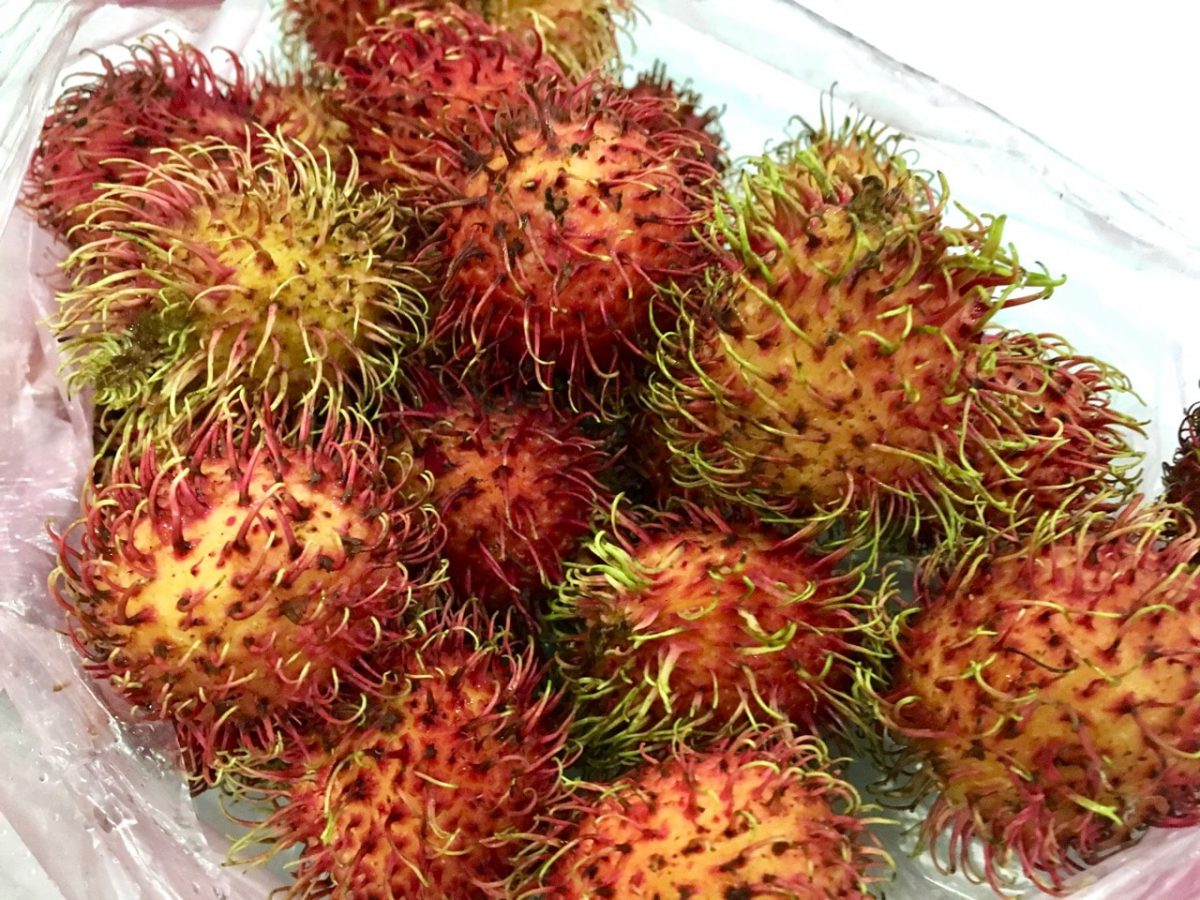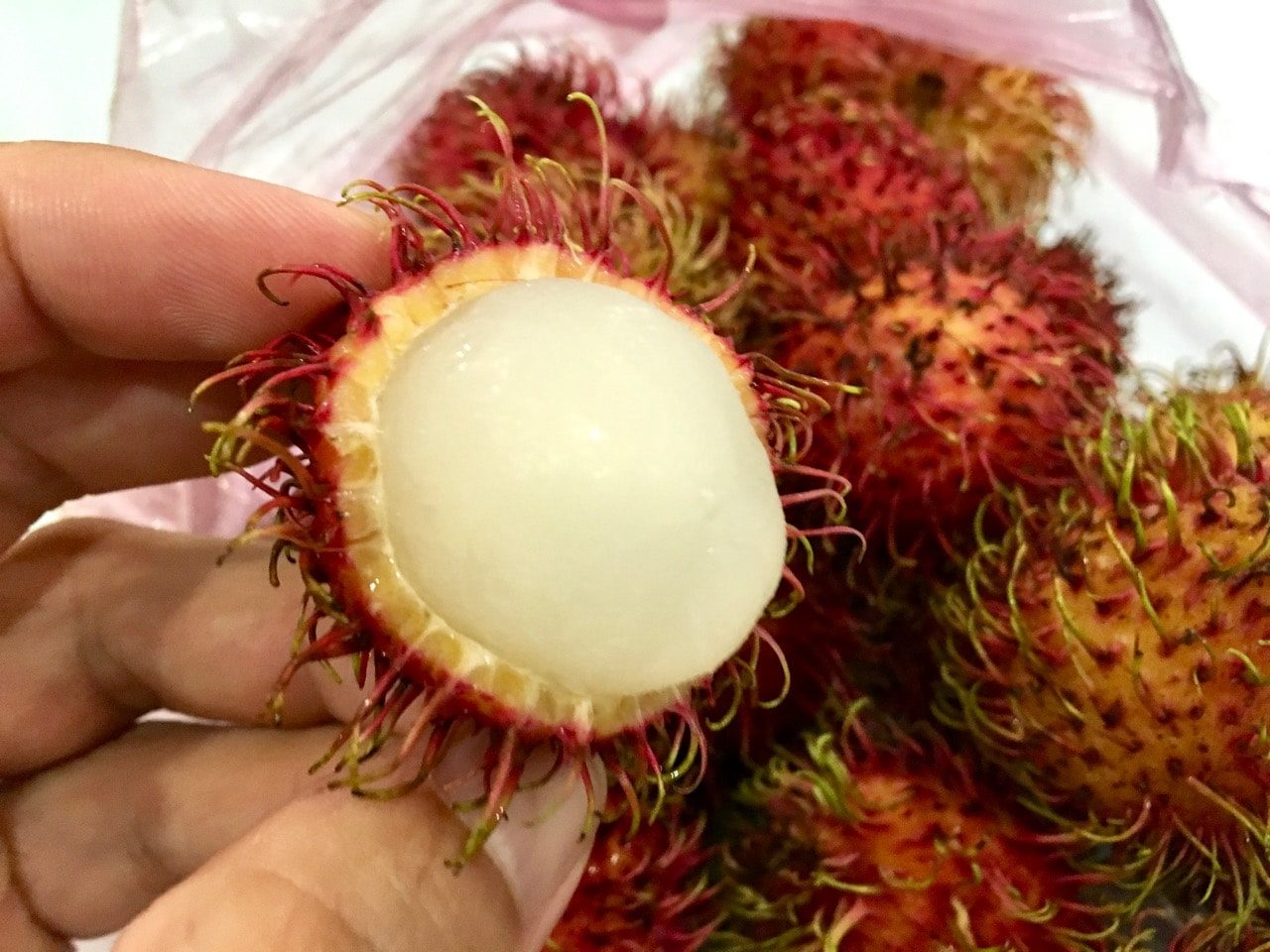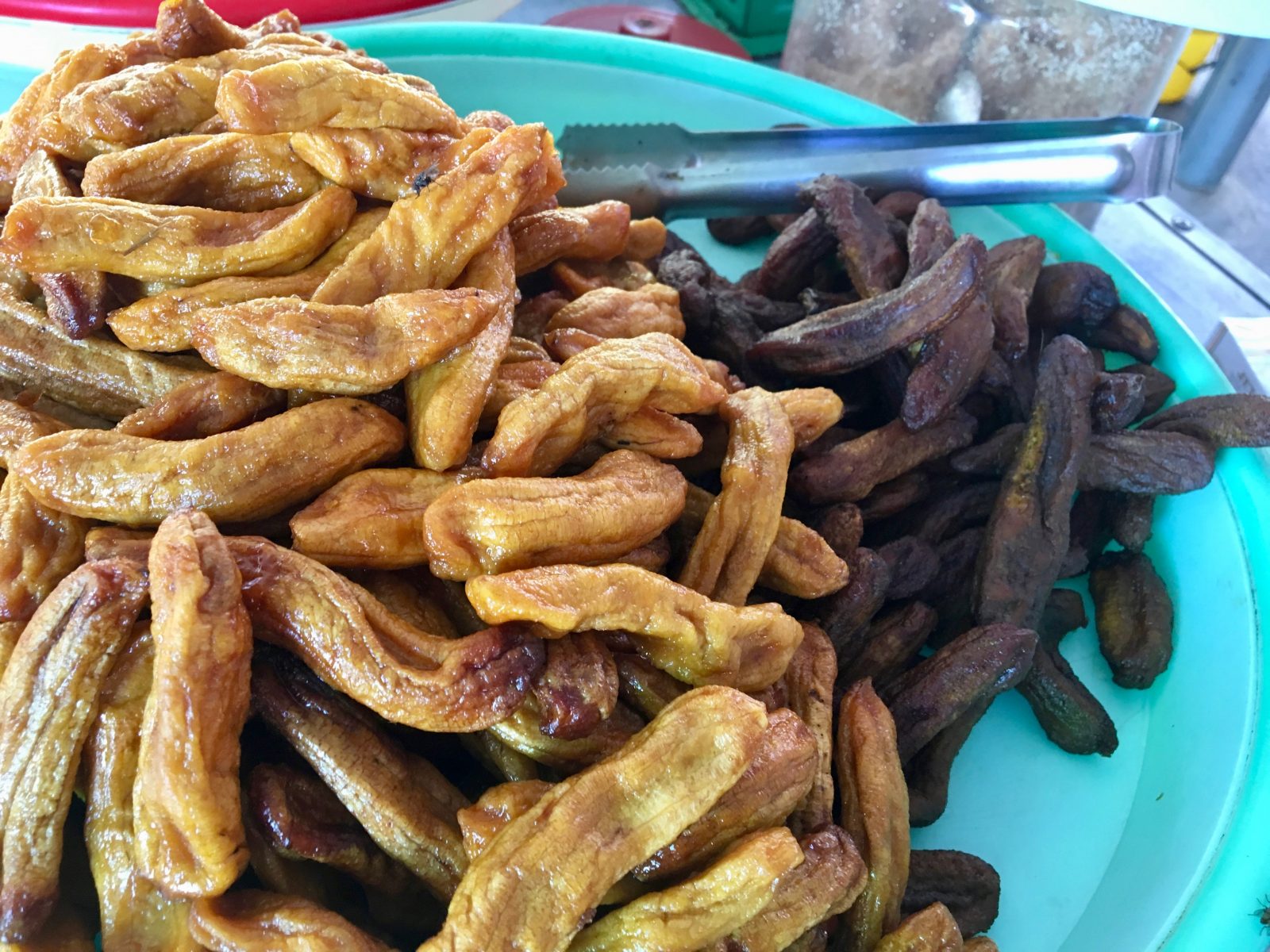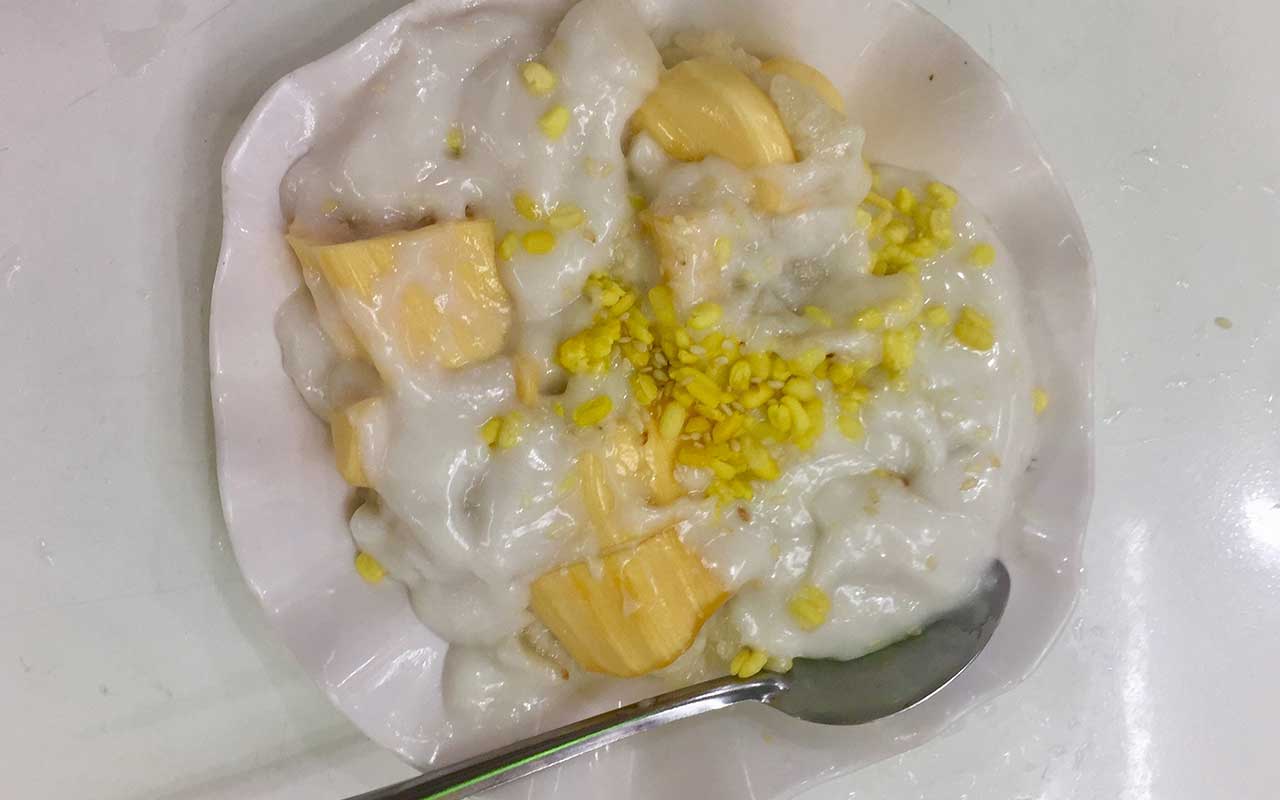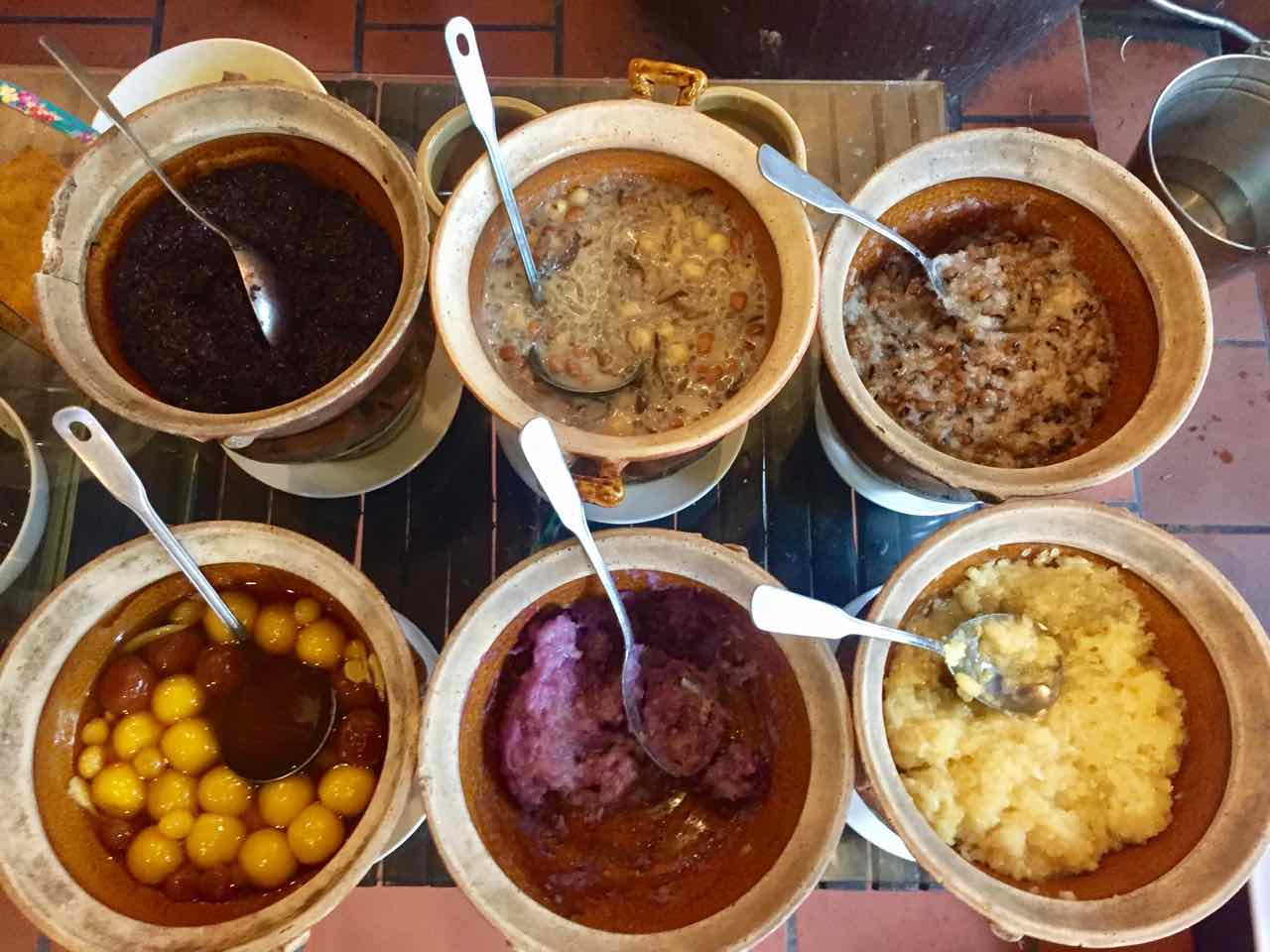Jump straight at FAQs – quick facts about Rambutan, the hairy fruit
My first encounter with the weird-looking hairy fruit – Rambutan
I’ll never forget my first encounter with chôm chôm, the hairy fruit that completely captivated me. It was during a stroll through a bustling market in Saigon, surrounded by a colorful array of fruits and vegetables. There it was, nestled among the produce, looking more like a whimsical sea creature than anything you’d want to eat.
Intrigued, I asked a vendor about it. He chuckled, clearly amused by my curiosity, and said, “It’s fruit. A little sweet, jelly-like.” He grinned, probably wondering how I could be so clueless about this beloved and ubiquitous Vietnamese treat.
 Description
Description
Rambutan (chôm chôm) is a shaggy-haired and fiery looking fruit. From outside it looks like a tiny red sea urchin, however, the suspiciously looking shell encases an innocent, translucent white fruit with a stone (pit) in the middle, similar to the lychee or Iongan. Chôm chôm comes in a number of varieties—varying in sweetness and colour. Some with streaks of gold, orange and green.
The healthy version of the famous gummy bear candies
Rambutans are surprisingly easy to open, revealing a juicy, white fruit inside that tastes remarkably like those gummy bear candies we loved as kids. But these days, I’m much less inclined to eat suspicious chemicals masquerading as fruity bears, so chôm chôm is a welcome, natural alternative to my childhood snack. I find rambutans to be slightly watery, a little sweet, and just a touch crunchy, which adds to their appeal.
That said, I have to admit, I’m not the biggest fan of rambutan. The taste is fine, but what I really can’t stand are the sticky fingers I’m left with after eating them. As long as there’s somewhere nearby to wash my hands, it’s not a dealbreaker, but it’s definitely something to keep in mind if you’re planning on snacking on these hairy fruits on the go.
Can you imagine chewing a mildly sweet and slightly crunchy jelly-like substance? If not, try Rambutan. And mind a stone (pit) in the middle—not edible!
Chôm chôm is available in many Asian markets. The usual cost ,as of 2017, varies: 20-40k VND/kg.
Frequently asked questions
1. What is rambutan, the hairy fruit?
Rambutan is a tropical fruit known for its hairy, spiky exterior and sweet, translucent flesh. Often compared to lychee and longan, this exotic fruit is popular in Southeast Asia.
2. How do you eat rambutan?
To eat rambutan, simply cut or peel away the hairy outer skin to reveal the juicy, translucent fruit inside. Be sure to remove the seed in the middle before eating.
3. What does the hairy fruit rambutan taste like?
Rambutan has a sweet, mildly tangy flavor, similar to grapes or lychee. Its juicy texture and slightly chewy flesh make it a refreshing and unique tropical fruit.
4. Is rambutan good for you?
Yes, rambutan is packed with nutrients like vitamin C, iron, and fiber, making it a healthy addition to your diet. It also contains antioxidants that can support overall health.
5. Where can I buy rambutan, the hairy fruit?
In USA, Europe and Australia, rambutan can be found in Asian grocery stores, specialty markets, and sometimes in the exotic fruit section of larger supermarkets. You can also buy it online during its peak season. In South East Asia and Vietnam it can be found on local fruit markets almost everywhere.
6. How do you store rambutan?
To keep rambutans fresh, store them in a cool, dry place. For longer shelf life, you can refrigerate them, but it’s best to eat them within a few days for optimal taste.
7. What are the differences between rambutan and other hairy fruits like lychee and longan?
While rambutan, lychee, and longan are similar, rambutan is known for its distinctive hairy skin, whereas lychee has a rough, bumpy shell, and longan has a smoother, brown skin. The flavor profiles are also slightly different, with rambutan being sweeter and juicier.
8. Can you grow rambutan at home?
Rambutan trees thrive in tropical climates. If you live in a warm, humid environment, you can grow rambutan trees at home, but they require specific care and conditions to fruit successfully.

